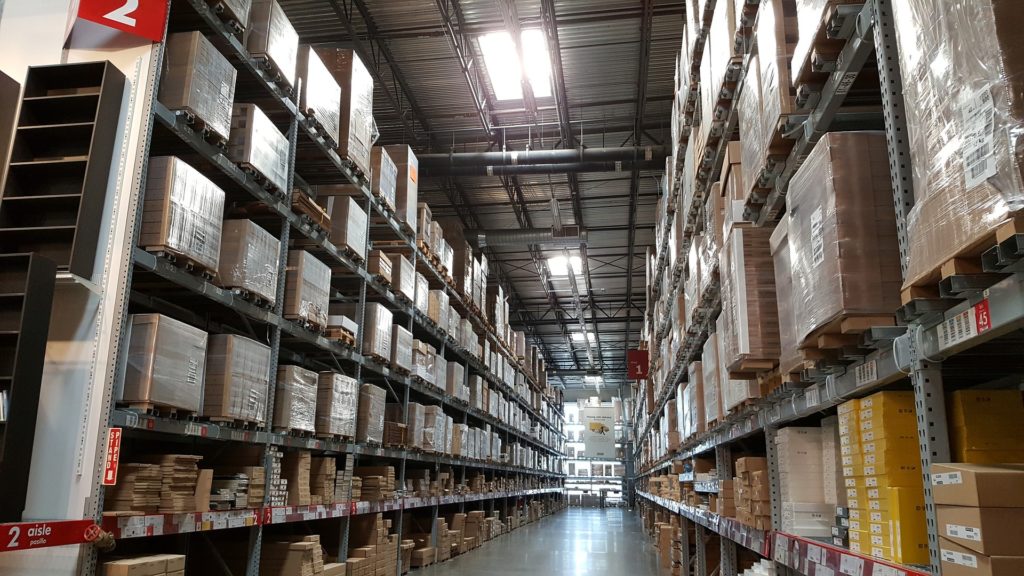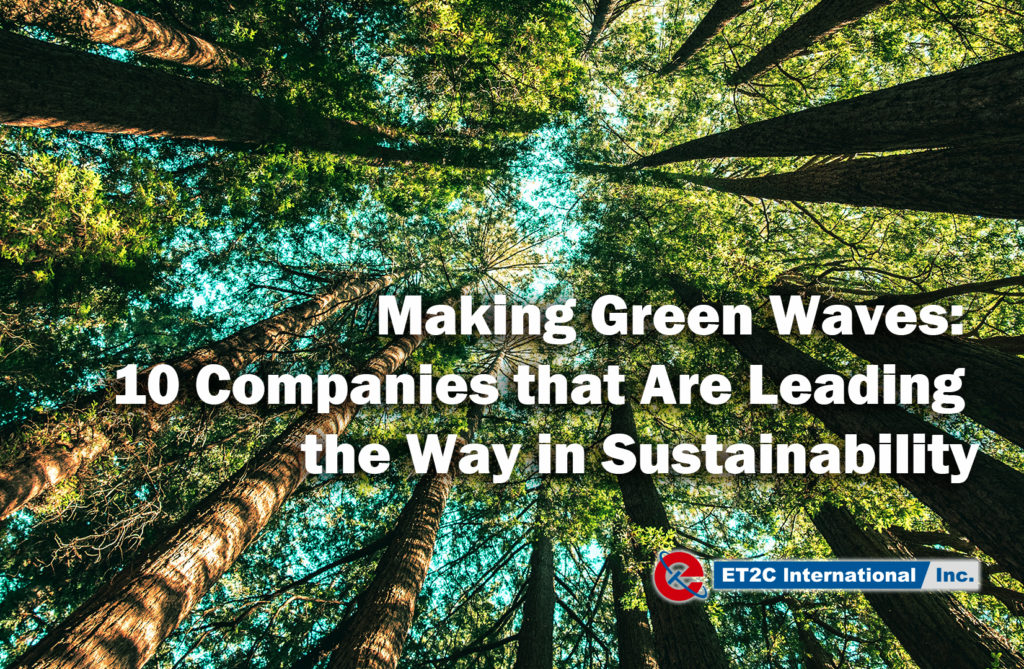Ever since the release of Rachel Carson’s 1962 book “Silent Spring,” the idea of sustainability has always at least been in the periphery of many companies. Things progressed in the 1970s, as pressure for environmental protection was turned up by NGOs such as GreenPeace (1971), Friends of the Earth (1971), and the earlier-formed WWF (1961). In the 1980s and 1990s, catastrophic events such as the Exxon-Valdez oil spill and the Chernobyl Nuclear Disaster caused the call for global responsibility to become more compelling. Recently, with many governments and multilateral organizations pushing for sustainable development, many companies have adapted to the relatively-new emphasis on environmental through a multitude of devices.
There’s good reason for jumping on the sustainability bandwagon too. The business & Sustainable Development Commission recently revealed statistics on the value of sustainable business models and how it could “open economic opportunities worth up to US$12 trillion and increase employment by up to 380 million jobs by 2030.” With many nonrenewable resources running out and governments across the world giving subsidies to eco-friendly businesses, many firms have heeded the call for environmental protection.
However, even though many companies are acting to protect the environment, there are some whose massive-scale efforts and innovative ideas serve as an inspiration to others. Here are ten companies that are making a difference for a greener and more sustainable planet.

10. Walmart
What They’re Doing: The number one company on the fortune 500 list, Walmart is also doing its part for the environment. Walmart has set some pretty ambitious goals for itself when it comes to sustainability. Walmart’s website states that its sustainability goals consist of “creating zero waste, operate with 100% renewable energy and sell products that sustain our resources and the environment.” While ambitious, Walmart has already made significant strides towards these objectives, boasting statistics such as “78 percent of global waste diverted from landfill” in 2017 and investing $25 million over five years on food safety projects in China (Walmart, 2018).
Big Project:
Project Gigaton– avoid one billion metric tons (a gigaton) of greenhouse gases from the global value chain by 2030.
How it works: suppliers can take their sustainability efforts to the next level through goal-setting, and get credit from Walmart for the progress they make (Walmart, 2018).
9. Google
What They’re Doing: With a motto like “Don’t be evil,” it’s no surprise that Google, one of the centerpieces of silicon valley, has already progressed in making their company more sustainable. Since starting their sustainability efforts, Google has touted some impressive numbers surrounding sustainability. Some of their remarkable accomplishments include Google data centers using 50% less energy than the average data center, diverting 91% of waste from their global data center operations away from landfills, and empowering their suppliers to use renewable resources. (Google, 2018).
Big Project:
Global Fishing Watch – “provides a transparent view of commercial fishing activities across the globe, in hopes of protecting critical marine habitats and providing new tools for sustainable fisheries management for the long term.”
How it Works: offers near real-time tracking of fishing activity through their public map, enables scientific research, and improving fishing management (Global Fishing Watch, 2018).
8. Nestlé
What They’re Doing: With an image of a bird feeding her offspring as their logo, it’s perhaps not much of a surprise to uncover that this food and beverage company has worked hard to protect nature. Nestle boasts an impressive eco-friendly resume, with actions like systematically reducing the weight of their packaging since 1991 (with a reduction of over 500 million kg to date), and utilizing a team of over a thousand agronomists to provide training to their farmers to minimize their environmental impact. (Nestle, 2018)
Big Project:
Water Stewardship – “aims to be responsible stewards of water, ensuring it is available and managed sustainably, protecting it through high-profile collaborations, treating the water we use as effectively as possible, supporting our supply chain in the use of water, educating communities on how to use water efficiently, and improving access to water and sanitation”
How it Works: Reducing water consumption, protecting and preserving water resources through research with NGOs like the WWF, and Zero Water technology (Recycled water). (Nestle, 2018)
7. Cisco Systems
What They’re Doing: Cisco systems, a hardware producer out of San Francisco and one of the key firms in Silicon Valley, has also stepped up to the plate to work for a greener planet. The company has implemented some inspiring environmental-protection measures as well, including having sustainable energy accounted for 80% of their worldwide electricity use.
Big Project:
Rhino Conservation – Cisco and Dimension Data partnered to track poachers at a game reserve in South Africa, successfully reducing rhino poaching in southern Africa by 96%.
How it Works: Cisco develops seismic sensors, drone cameras, thermal imaging, and biometric scanning technology to be used in anti-poaching efforts.

6. Apple
What They’re Doing: Perhaps one of the more well-known brands on this list, Apple has always set itself from the pack through innovation and creativity. Apple has carried these sentiments into its efforts in sustainability, achieving a fall in total transportation emissions fell by 3 percent in the fiscal year 2017 while their corporate employee headcount grew by 9 percent. In April 2018, Apple had 23 partners committed to 100 percent renewable energy for Apple production and to lower emissions by focusing on aluminum production, which “reduced emissions associated with every gram of aluminum in iPhone by 83 percent” (Apple, 2018).
Big Project:
Closed-Loop Supply Chain – This project will see Apple products made using recycled or renewable materials only and will return an equivalent amount of material back to the market to be used by Apple or other entities.
How it Works: Encouraging customers to return their iPhones during upgrades, recycled materials from outside recycling sources, and disassembly sections in factories.

5. Honda
A slogan like “You meet the nicest people on a Honda” seems to be a bit of a stretch, but it hasn’t stopped Honda from working tirelessly for a brighter and healthier future for the planet. Honda has taken sustainability measures such as aiming to reduce the CO2 emissions intensity of motorcycles, automobiles and power products by 30% compared with 2000 levels by 2020. Honda also has bragging rights as it became the world’s first mobility company to disclose estimates of all GHG emissions from its entire value chain in August of 2012 (Honda, 2018).
Big Project:
Triple Zero – Three goals relating to the number zero: Zeroing CO2 emissions using renewable energy, Zeroing energy risks, and Zeroing resource and disposal risks.
How it Works: Management of resources and working with disposal partners to ensure safe and effective transfer of waste materials, working with renewable energy companies to integrate technology into automobiles, and encouraging customers to pursue environmentally-friendly lifestyles (Honda, 2018).
4. Interface
When a company is known more for its sustainability efforts than the actual product it sells, then it’s clear that the company is serious about environmental protection. The company dropped jaws back in the nineties when it announced that it would eliminate any negative impact its company has on the environment by 2020. So far the company has done well in keeping its word, they’ve replaced latex in their precoat with recycled PVB, recycle used fishing nets for materials, and their factories all use 95% green energy, allowing them to run more efficiently (Interface, 2018).
Big Project:
Mission Zero – Eliminates any negative environmental impact the company has by 2020. So far they have reduced their carbon footprint per square metre of produced carpet by 98%, water usage by 93%, and factories use 95% renewable energy and send zero waste to landfill across Europe.
How it Works: Radically redesigned the company their products and the way they do business.
3. Ikea
Known for their DIY and oftentimes less-expensive furniture, IKEA is now aiming to get recognition for its environmental sustainability efforts. Ikea has introduced new products to aid people in cutting their energy and water use, such as a tap nozzle that reduces water usage by 90 percent, and air-cleaning textiles. The company has also introduced new and more sustainable materials into their production process, with 100% cotton 77% wood in IKEA products coming from sustainable sources, citing that it will ultimately help lower costs while also doing the right thing.
Big Project:
IKEA Group Sustainability Strategy for 2020 – Will see 91% of waste from their stores recycled or incinerated for energy recovery, increase in the use of sustainable materials in production, and selling LED light bulbs to save energy (so far they have sold 85 million).
How it works: Marketing campaigns encouraging the buying of LED bulbs, working with sustainable suppliers for materials, tracking the production of products to identify wastes of energy and materials. (IKEA, 2017)

2. Unilever
Unilever has a lot of products under its control, including Dove, Lipton, Axe, Popsicle (yes, it’s a brand), and Marmite. With great power comes great responsibility and Unilever has famously demonstrated itself as responsible. Unilever has set three main goals for its sustainability efforts which are to help more than a billion people take action to improve their health and well-being by 2020, halve the environmental footprint of the making and use of their products as they grow their business by 2030, and enhancing the livelihoods of millions by promoting fairness in the workplace, opportunities for women and inclusive business by 2020.
Big Project:
Unilever Sustainable Living Plan – Aims to create sustainable growth through brands with purpose, cutting business costs, reducing risks and building trust with consumers
How it Works: Unilever will follow the UN Sustainable Development Goals. Since the company is so gigantic and covers so many different products, the actions it is taking to be more sustainable range from the extraction of raw materials to manufacturing chemicals, causing the comprehensive UN Sustainable Development Goals to serve as a reliable tool for the company’s entire supply chain (Unilever, 2018).
1. Patagonia
Dubbing itself as an “Activist company,” Patagonia has put environmental protection as the company’s main priority. Patagonia has already claimed recognition as one of the largest funders of environmentalist causes. The company gives 1% of its sales (not its profit, its revenue), to environmental grants and organizations, funding everything from local nature perseveres to massive NGOs like the WWF. The company has donated 89 million dollars to environmental causes since 1985 in addition to giving 954 grants in 2017 alone. The company also encourages the buying and selling of worn wear, encouraging its customers to send back in their used gear so it can be repaired and sold again. The site also offers tips and guides on how to repair your own clothing, encouraging their customers to reduce clothing waste and learn a new skill.
Big Project:
Tin Shed Venture – Patagonia’s corporate venture capital fund partners with businesses focused on building renewable energy infrastructure, practicing regenerative organic agriculture, conserving water, diverting waste, and creating sustainable materials
How it works: Funds small businesses that apply for funding. The businesses must be working for a better environment and prove how they are doing so in their application. A full list of companies can be viewed here.
Summary
The UN has set their Sustainable Development Goals (SDGs 2015) and there are a range of different elements from health to equality to environment that need addressing. Consumerism has been rampant for the past 30 years spurred on by the rise of technology (the likes of Amazon etc) and low cost products from the East. The consumer is now evolving and a Brand’s stance or position on sustainability and the broader horizon will become increasingly important as part of capturing a sale.
The above projects and the companies that founded them are part of the inspiration for us at ET2C to engage with the Sustainability discussion and to start the implementation of our own ideas within our business and across our supply chain in 2019. With operations in China, Vietnam and India, we have an opportunity to make an impact, however small, in emerging economies as well as through collaborating with our clients in their own respective markets. #dogood, #sustainability taskforce.
For queries related to Sustainability, why not email us at sustainability@et2cint.com .


